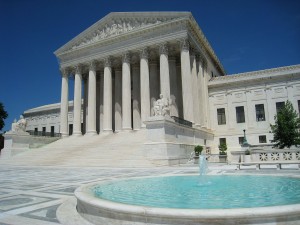Debunking the Refine of Federal Appeals: What You Need to Know
Navigating the complex realm of government allures can often look like passing through undiscovered waters for those not familiar with the process. Comprehending the subtleties of appellate court jurisdiction, the complexities of submitting a notification of charm, providing a compelling short, and making an influential oral debate are vital elements that can significantly affect the outcome of a situation. By deciphering the layers of complexity bordering federal charms, individuals can acquire a clearer understanding right into the mechanisms that regulate this critical phase of the lawful system.
Understanding Federal Appeals Refine
Exploring the detailed realm of the government charms procedure unveils a methodical and structured trip with the judicial system - federal appeal lawyer oklahoma. Federal appeals act as a crucial mechanism for examining decisions made by lower courts. Recognizing this process is crucial for anybody associated with legal procedures at the government level
The procedure usually begins with a party dissatisfied with a reduced court's judgment filing a notification of allure. This sets off a testimonial by a greater court, where a panel of judges evaluates the lawful disagreements provided by both parties. Briefs detailing the lawful reasoning behind each celebration's setting are sent, and oral disagreements might be heard to clear up complex concerns.
The appellate court's decision is based on a complete assessment of the lower court's process and the debates offered. When the appellate court reaches a decision, it can attest, turn around, remand, or change the lower court's ruling, supplying clarity and finality to the lawful disagreement.
Appellate Court Territory Explained

Appellate courts have jurisdiction over specific kinds of instances, typically those involving legal errors, procedural problems, or questions of legislation as opposed to valid disputes. The territory of appellate courts is typically outlined in statutes and laws that control the court system. Recognizing appellate court territory is crucial for celebrations associated with the appeals procedure as it establishes whether a situation is eligible for review and the level to which the appellate court can intervene in the reduced court's decision.
Filing a Notice of Charm
The first action in beginning the government allures procedure includes filing a Notification of Allure with the appropriate appellate court. federal antitrust appeals. This critical paper officially alerts the court and the various other events associated with the situation that the appealing celebration plans to look for a testimonial of the reduced court's decision. Submitting a Notification of Appeal is a stringent procedural need that establishes the appellate procedure in movement
When preparing the Notice of Appeal, it is vital to guarantee conformity with the particular regulations and standards of the appropriate appellate court. The paper has to commonly include details such as the situation name, the lower court's name, the date of the judgment being appealed, and a succinct declaration showing the grounds for the charm.
Timeliness is of the significance when filing a Notification of Charm. Missing the target date for sending this file can lead to the appeal being rejected, highlighting the relevance of prompt and precise initiation of the charms procedure. It is suggested to seek lawful assistance to browse the complexities of filing a Notification of Allure effectively.
Rundown and Oral Debate
In the appellate procedure, providing composed briefs and engaging in dental arguments play critical roles in advocating for the appealing event's position prior to the appellate court. Briefs are comprehensive lawful papers that lay out the celebrations' debates, legal authorities, and evaluation supporting their settings. These created submissions supply the court with a comprehensive understanding of the realities of the instance, the appropriate regulation, and why the appealing party thinks the reduced court's decision need to be reversed.
Following the entry and evaluation of the briefs, oral debates provide the celebrations a chance to further clarify their placements, address any type of questions the appellate courts may have, and highlight bottom lines from their written briefs. Dental debates are an opportunity for the lawyers to persuade the judges with verbal campaigning for and responses to inquiries from the bench.

Obtaining the Appellate Court Decision

Final Thought
Recognizing the appellate court territory, filing a notification of charm, preparing briefs, and providing oral arguments are all essential parts of this process. Inevitably, receiving the appellate court decision can offer quality and resolution to legal disagreements.
As we advance from recognizing the federal charms process to exploring the details of appellate court territory, a fundamental element comes to light relating to the authority and limitations of these higher courts in the legal landscape. Appellate court territory refers to the scope of instances that a specific appellate court has the power to determine and review upon. Unlike test courts that listen to instances for the initial time, appellate courts are restricted to evaluating decisions made by reduced courts. Recognizing appellate court jurisdiction is vital for celebrations involved in the allures process as it determines whether a case is qualified for evaluation and the level to which the appellate court can intervene in the lower court's choice.
Whether the appellate court verifies, turns around, or remands the reduced court's choice, recognizing the ramifications of the judgment is essential for all parties involved in the appellate process.